The difference between fine coffee beans and commercial coffee beans. Why can boutique beans be sold
Professional coffee knowledge exchange more coffee bean information please follow the coffee workshop (Wechat official account cafe_style)
What makes boutique coffee so special? We know that the quality of boutique coffee is much better than commercial beans, but why? Does it mean that the coffee fruit already has these favorite flavors and characteristics when it is picked from the tree?
If only it were that simple!
It has a lot to do with the details of the production of these high-quality and small batches of boutique coffee, from fertilizer, the degree of shading, altitude, to the crops grown in the same small production area will affect the quality of coffee. But once you decide what to plant and where to plant it, you can't change it. When growing boutique coffee, you must pay attention to the details of the whole process, and there are three key points that will cause the quality difference in the final cup.
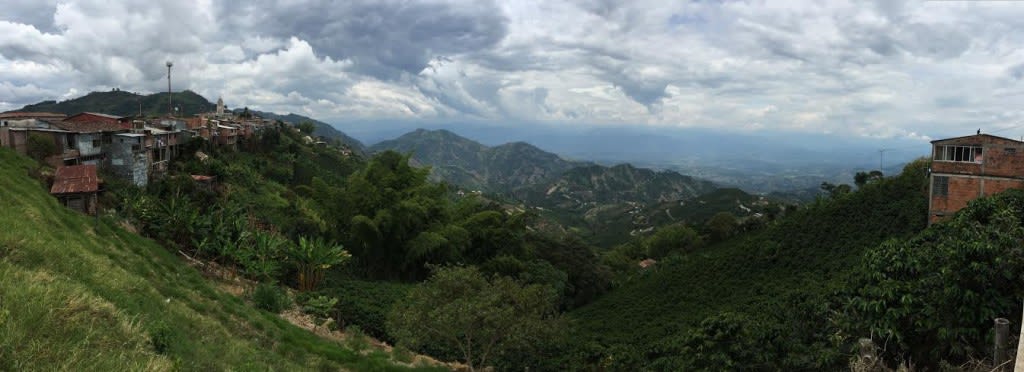
1. Coffee picker: pick the red coffee fruit!
Is picking coffee a pure labor? Come to think of it, these hard-working people are front-line personnel in quality control.
Traditional coffee pickers are taught to pick all the fruits they see, whether they are green, yellow, red or even black. Yes, even the blackened fruit is picked. This kind of harvest, which wins by quantity rather than quality, regards coffee as a mass-produced commodity rather than a boutique, and this business model does allow them to make more money.

Coffee farmer Jorge pulled down the branches of the coffee tree to find the red coffee fruit growing at the top, which is not a simple act.
However, in the third wave of coffee, things changed. Pickers at boutique coffee estates are taught to pick only red, ripe coffee fruits, which is very important because unripe or overripe fruits can cause coffee to be too sour or too bitter. However, in general, the picker of the coffee farm calculates the reward on the basis of the weight of the fruit picked, so such a change will be difficult for the manor. Although the pickers of the boutique coffee farm are also paid by quantity, they will give them some extra bonuses in order to make up for their income because the picking procedure is more cumbersome and less fruit is picked.

Leave green unripe fruit and pick red ripe coffee fruit.
No one is perfect, and occasionally overripe or unripe coffee fruits are picked, so some estates carry out a hand-picked process again to screen out any overripe or unripe fish. This ensures that only the best quality, ripe coffee fruit can enter the washing plant.
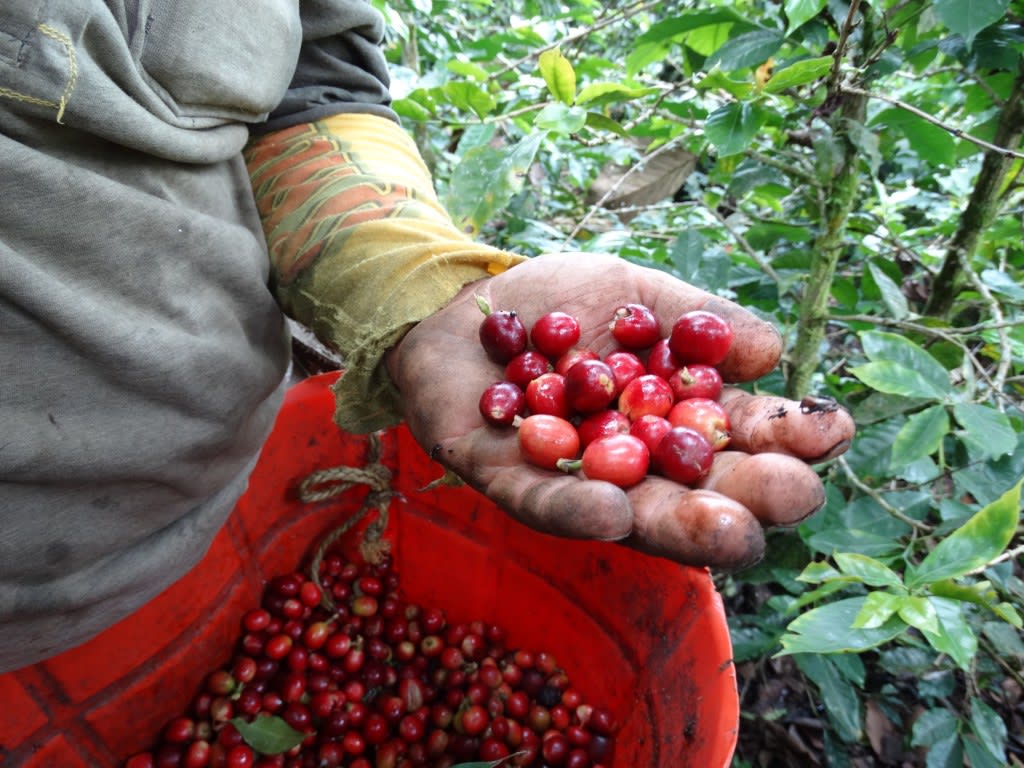
Jorge, a coffee farmer, showed us how to pick coffee fruits.
two。 Coffee drying: screen out all defective beans!
When the coffee fruit is washed and dried to the optimum humidity, the next stage of shelling is carried out, and this stage is the second quality control point.
Why are there so many quality control points? Even ripe red fruits have hidden flaws, which may be good in appearance, but it is difficult to judge whether the coffee beans are wrapped in the fruit.
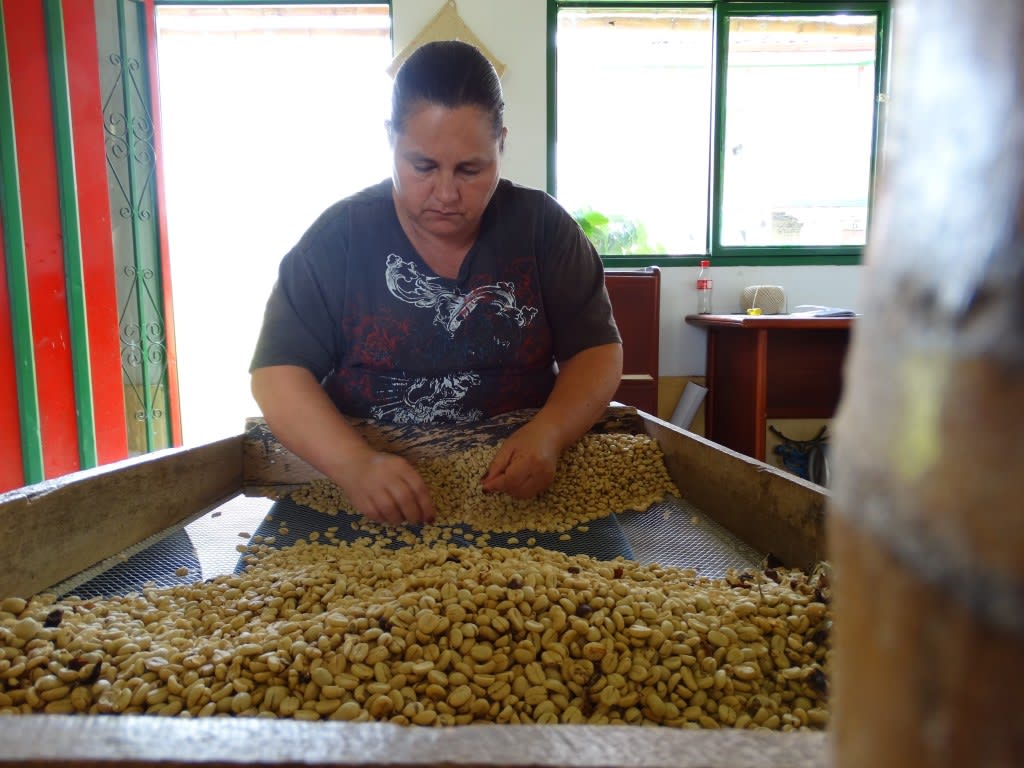
Coffee farmer Rosa is picking up shelled coffee beans.
Pick out the defective shelled coffee beans you see and gather them together. Unfortunately, these beans will still be sold on the market, usually mixed with commercial bean-grade coffee and the coffee that many Colombians drink every day.
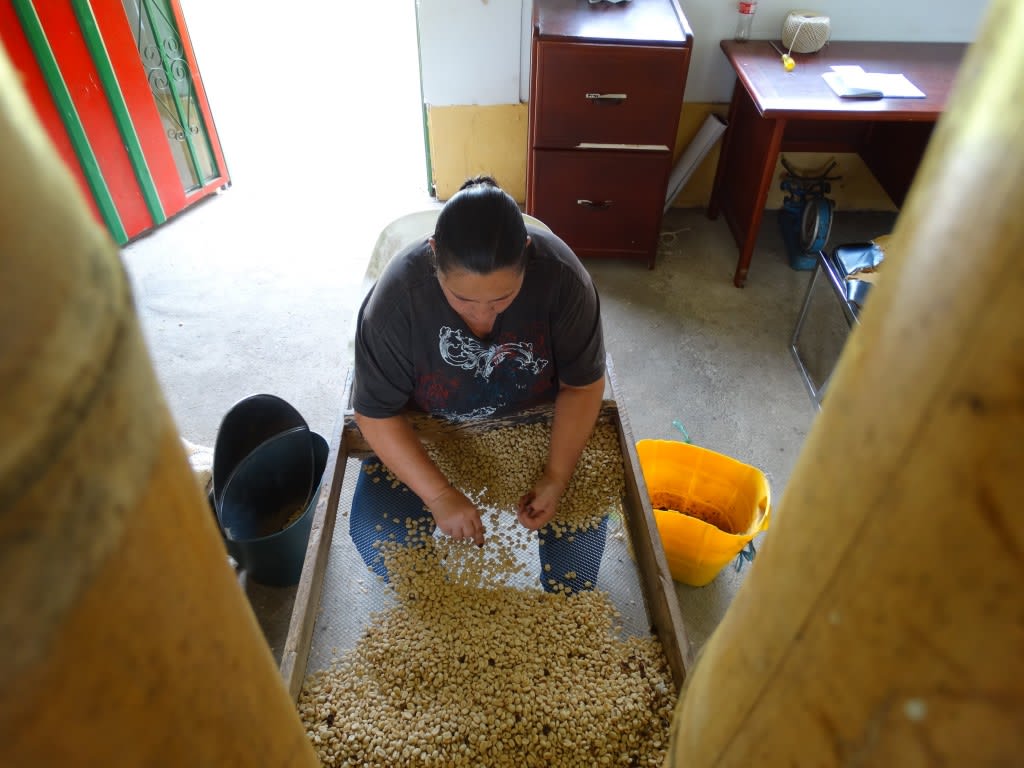
3. Raw beans: the final stage
When the coffee beans are shelled, it is the last state before baking: raw beans. Quality control is also needed at this stage, and the pectin layer, like coffee pulp, may contain defects, while according to SCAA standards, fine coffee is mainly defective beans, so it should be very rigorous in screening defective beans.

Defective samples of raw beans from the Columbia Coffee Federation.
In the last stage, the quality control points are traditionally hand-picked, but now machines can replace manpower to operate. Hand-picking is an ideal method, because it can provide job opportunities for local people.
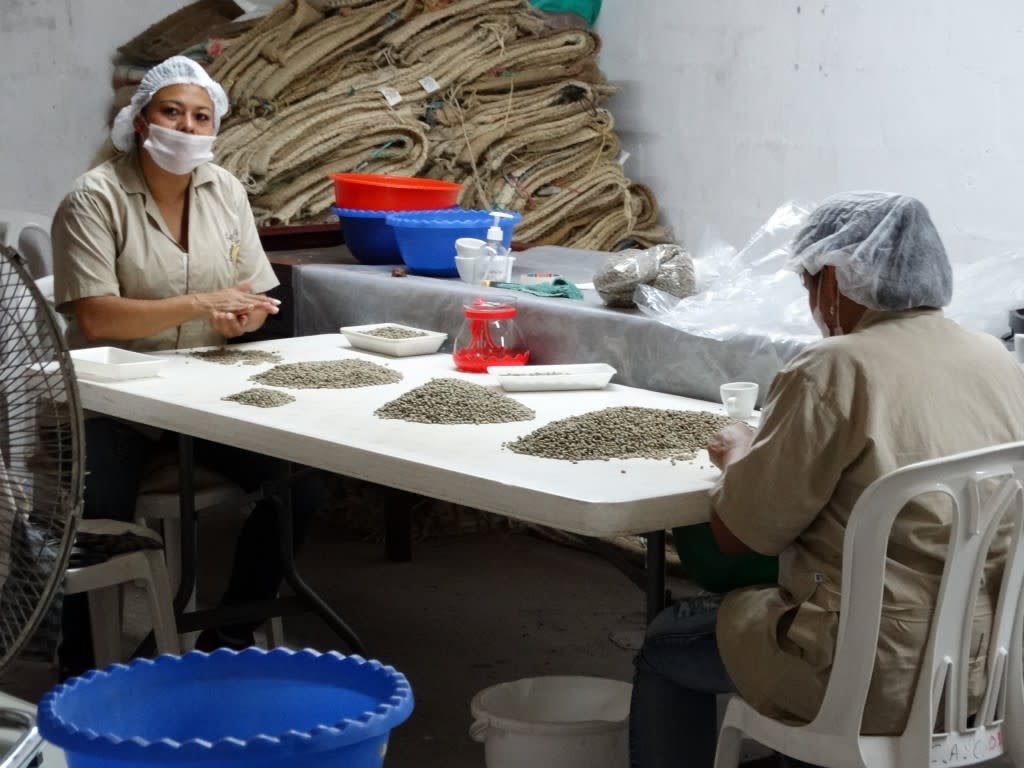
The Azahar coffee factory in Colombia and Armenia is picking up raw coffee beans.
However, most of this stage does not save time, especially the trading volume of cooperatives is very large. as an importer and exporter of small coffee producing areas, the author focuses on maintaining the economic and social sustainability of the residents of the producing areas. therefore, he prefers to use the traditional hand-picked method. But for other businessmen, using machines to pick coffee beans may have more commercial considerations.
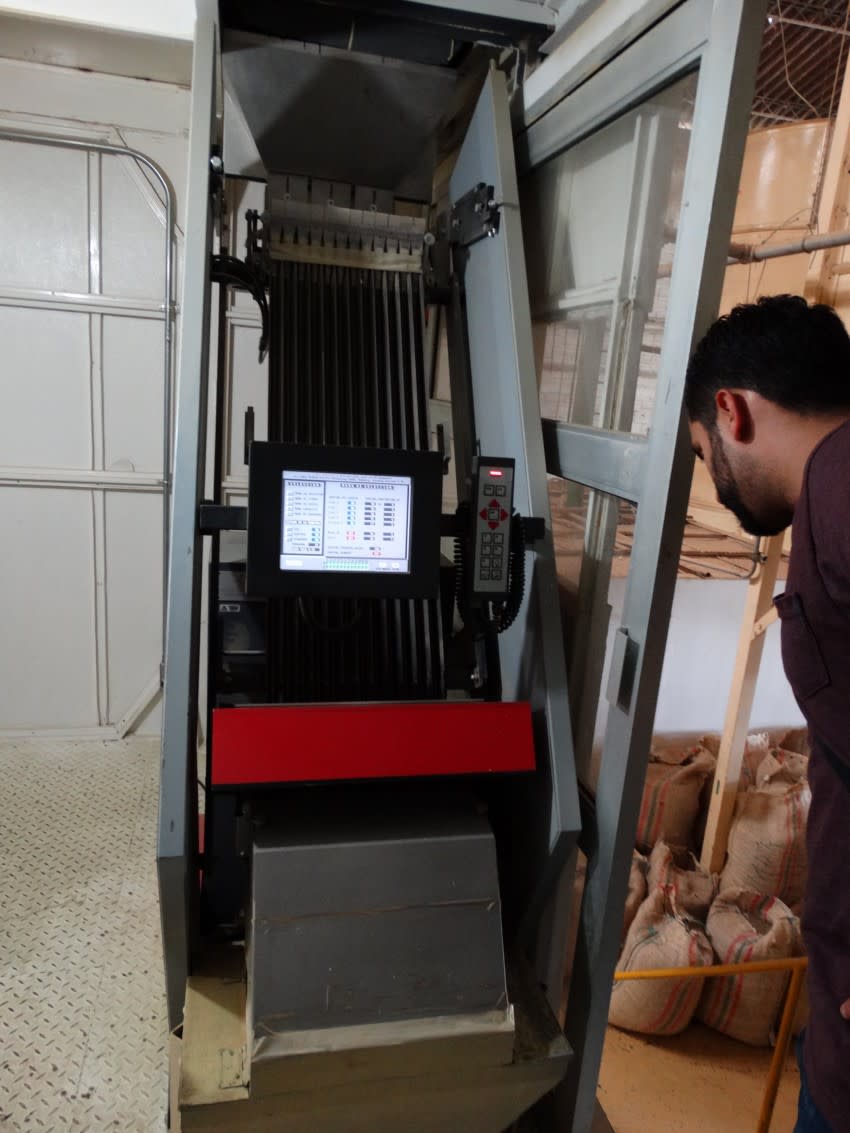
Colombian coffee raw bean picker
Ready to bake beans, but quality control will continue.
The processing stage of raw beans on the manor has come to an end, when the beans ready to be baked are flawless and rich in flavor. But if you think quality control is over, you are wrong! Quality control must continue until we enjoy the coffee in the cup.
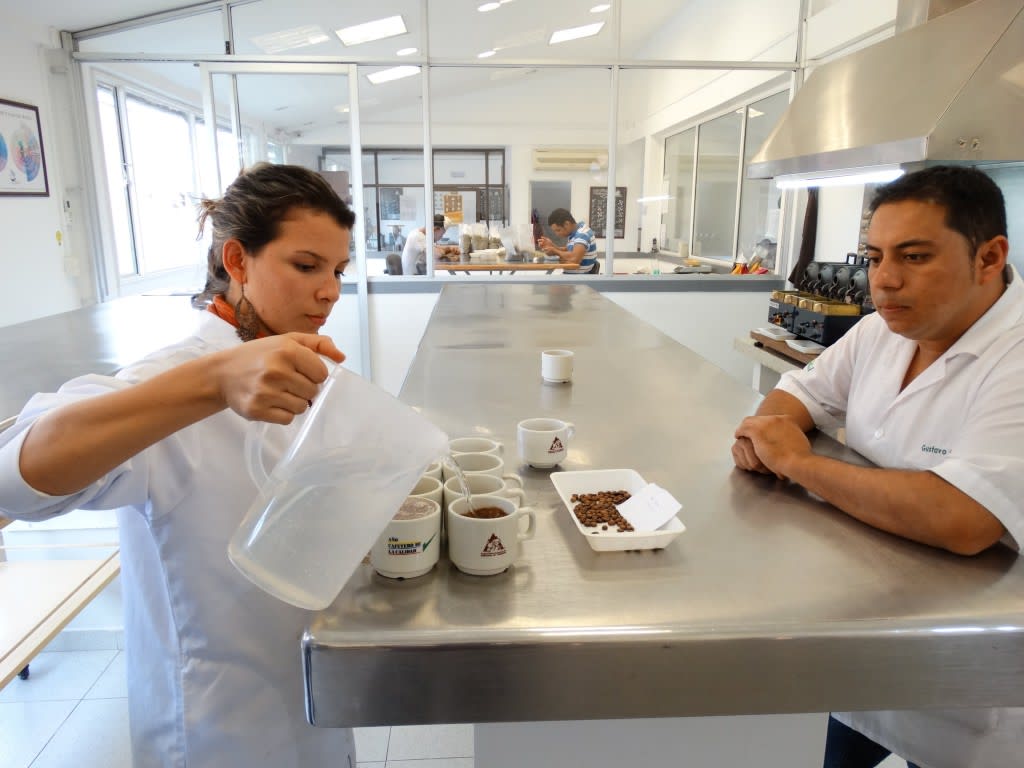
The Columbia Coffee Federation conducts cup tests for raw beans in quality control.
Of course, the quality control points in these three processes ensure that the defect rate of coffee beans is minimized.
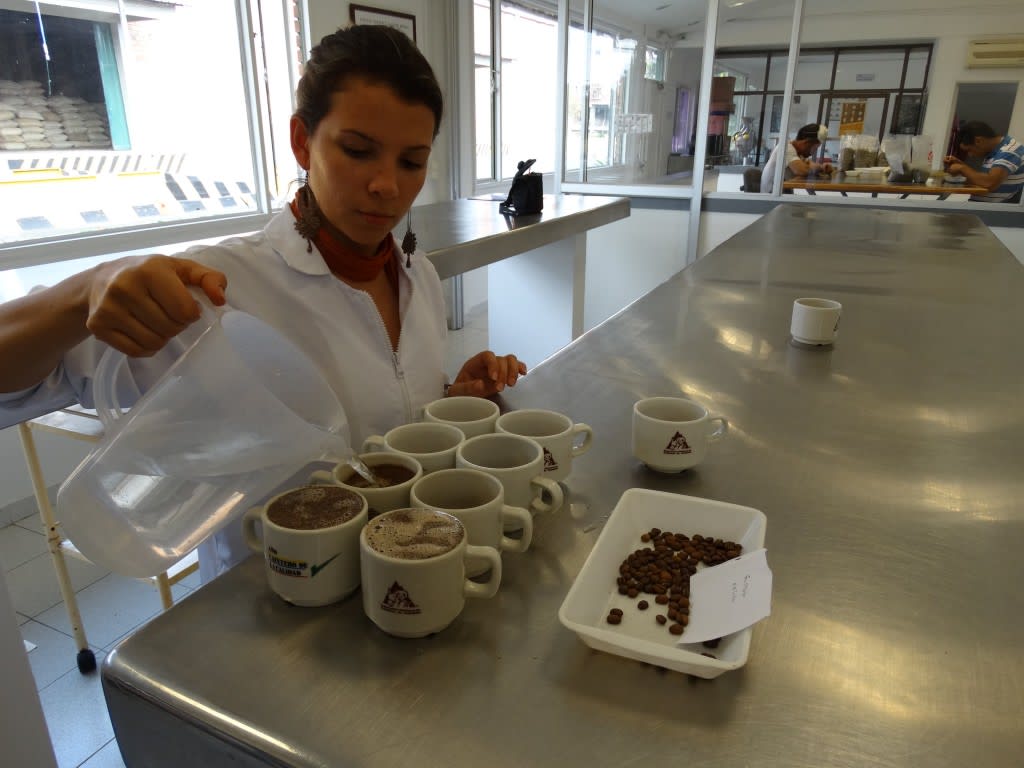
The quality control of boutique coffee is very strict. The picture shows the Columbia Coffee Federation conducting a cup test.
Through the continuous and effective implementation of these three quality control, the quality of coffee beans will be significantly improved. So when you drink delicious boutique coffee, remember that the coffee beans are not only delicious, but also cover meticulous procedures, labor efforts, quality control of origin, and so on.

Many efforts have been made behind the high-quality boutique coffee in the hands of consumers. The picture shows the Columbia Coffee Federation conducting a cup test.
Fortunately, they have really done a good job in all kinds of tests!
Translated from Perfect Daily Grind
END
Important Notice :
前街咖啡 FrontStreet Coffee has moved to new addredd:
FrontStreet Coffee Address: 315,Donghua East Road,GuangZhou
Tel:020 38364473
- Prev
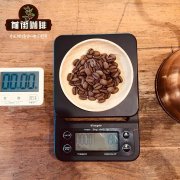
Robsta and Manning are fighting for headlines, and Arabica says he wants to get involved.
Professional coffee knowledge exchange more coffee bean information please pay attention to the coffee workshop (Wechat official account cafe_style) No matter what kind of beans, the lighter the roasting degree, the more sour (this is related to the coffee roasting process will produce acetic acid, acetic acid is a volatile organic acid, so the longer the roasting, the more intense the acetic acid volatilization, the less obvious the acidity), we can see the Yega Xuefei and Mantenin on the market.
- Next

What are the different regional characteristics of the Sidamo producing area in Yegashifi, Ethiopia?
Professional coffee knowledge exchange more coffee bean information please follow the coffee workshop (Wechat official account cafe_style) for example, the more famous and well-known one is Sakuran from the GUJI producing area. Only coffee beans that really grow at an altitude of more than 2200 meters can be counted as Sakuran. With the smell of jackfruit and nectarines, many people will use it to make ice.
Related
- Guji coffee producing area of Guji, Ethiopia: Humbela, Shakiso, Wulaga
- What is the most expensive variety of Qiloso in BOP multi-variety group?
- How to store the coffee beans bought home?
- Why are Yemeni coffee beans so rare now?
- Ethiopian Sidamo all Red Fruit Sun Sun Santa Vini Coffee beans
- SOE is mostly sour? What does it mean? Is it a single bean? what's the difference between it and Italian blending?
- Is Italian coffee beans suitable for making hand-brewed coffee?
- How to choose coffee beans when making cold coffee? What kind of coffee beans are suitable for making cold coffee?
- Just entered the pit to make coffee, what kind of coffee beans should be chosen?
- Can only Japan buy real Blue Mountain Coffee? What are authentic Jamaican Blue Mountain coffee beans?

